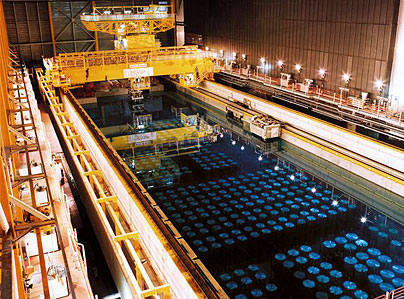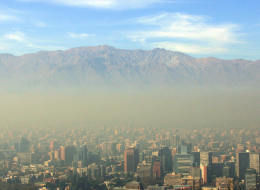When science and technology does more harm
Bhopol Indiia demonstrates when the benefits of technology can go horribly wrong





Yesterday's solutions often wind up as today's problems.
Yesterdays solutions become today's problems. This is often what happens when science gropes for a solution to an existing problem. All too often, we must experiment and grope from a position of total ignorance to some semblance of understanding. In the process, we often unwittingly upset the order of things. In conservative periods, science stalls and degenerates into statistics gathering and numerology. One of the classic examples of a solution becoming a problem is the development, widespread use of and final abandonment of DDT to control insect pests. Another example is the development of the internal combustion engine that initially liberated our movement and now threatens to choke us to death and burn us up. Almost everyone knows the curse associated with the use of nuclear energy. The discovery, use and the loss of anti-biotics is an emerging catastrophe of our period. Extending our ability in controlling nature, ordering it to our desires has created vast tracts of unimaginable suffering. Mono-culture agriculture has brought ruin to vast tracts of land at home and in areas that were formerly jungle and turned to desert in a few years. All the electronic gadgets that we manufacture for our entertainment eventually wind up in the landfill and slowly poison the environment. The same is true with throw away plastic and all the subsequent "Love Canals" that emerge form building on landfills. The oceans themselves are becoming polluted from convenience wraps and plastic, which is killing hundreds of thousands of seas mammals, fish and birds. In our mad rush to subdue, conquer and control nature for our profit and benefit has brought us to the brink of catastrophe. Let us look at each in turn and see what went wrong and how it may be corrected.
The DDT problem originated as a miracle fix to eradicate things like locust swarms that devoured everything to the bare ground. It was used to prevent pests like aphids, spider mites and boring worms. In the beginning, it worked very well and with due care being exercised, but from the very first day it began to filter into the water table and environment to reflect back on us. The effects were noticed as early as the 1950s and inspired Rachel Carson to write "Silent Spring" in 1962. This book became the watershed of the now world wide environmental movement. DDT was discovered to weaken the egg shells of wild eagles thus causing the species to come to the brink of extinction. Nor was the problem limited to eagles, but affected frogs, crocodiles, and many other wild birds. Helpful insects like bees and spiders were also heavily impacted. DDT shows up in nearly everyone's body, though banned in N. America. It is still used in other parts of the less developed world that can afford to by stockpiled reserves left over from abandonment by the developed world. Increasingly, natural solutions are being sought out and employed, but insecticides are still available for use for anyone who wants to use it. At many hardware and garden store. Malathion and other toxins are still available.
The internal combustion engine, turbine and other variations of the theme was considered a breakthrough when invented and refined, releasing humanity from dependence on draft animals. Every year, more and more engines enter the environment, poured out in the millions from factories around the world. It is now considered to be one of the leading causes of global warming. The sad fact of the matter is that for the most part, these engines are not necessary to run civilization as we know it. There are alternatives, but due to the profit motive of major oil cartels, these are not encouraged. So there is another factor that has entered into the picture that was not even acknowledge by science, the factor of greed and business profits.conducted
Nuclear nightmares are a fact of modern life. We all know about the dooms day clock and the Cuban Missile Crisis. We all know about Three Mile Island and Chernobyl, which stand as two nuclear nightmares. But these are far from the total. The nuclear age began with the destruction of Hiroshima and Nagasaki. Then there were the experiments conducted on unwitting soldier in the Nevada Desert. Since the dawn or nuclear reactors, there has been a major accident on average of one a year. Most of it has been kept quiet. In addition there is the problem of accumulating nuclear waste, that is extremely dangerous for thousands to billions of years. Some of the nuclear waste wound up in uranium doped bombs that were dropped on Iraq. Irradiation is used in medicine and in the processing of food. Irradiation with cobalt 60 helps in some cancers and irradiated food lasts a lot longer than non-irradiated food. As for irradiated food, it is full of free radicals and has been shown to be harmful to health.
War technology absorbs a huge amount of wealth, resources and manpower with the only return being destruction and the so called end of terror. Here more than in most other areas great technological strides are made. There are stealth bombers, spy satellites, smart bombs, laser cannons, nuclear missiles and a host of other weapons, the single purpose of which is the control and destruction of enemies. It is hugely profitable business and is deemed necessary for national security and protection of resources. The major part of scientific and technological research is bent to the task of warfare technology and methods.
With the discovery of penicillin, doctors thought they had created a miracle and, indeed for a time, it was just that, curing a wide range of diseases. After that came tetracycline, ampicillin and other anti-biotics. With careful planning, we were able to corner and eradicate smallpox. A loss of resolve meant we lost the war against tuberculosis. Anti-biotic use became widespread, even being used in factory farms to prevent overcrowded animals from becoming sick. A lack of jurisprudence in hospitals meant that they became less effective over the years, until one day, a super bug, MRSI evolved that would not respond to anti-biotic treatment. A few years ago, MRSI left the hospitals and wound up in the general community and wild. It is now common place and is very difficult to treat except by amputation in many cases. MRSI surfaces in necratising fascitis, celluitis and untreatable streptococcus infections. A new form of tuberculosis has evolved that can now only be treated as it was in the 19th century, by sequestering patients and surgery. We now live in a post anti-biotic lost paradise of health. Super disease now rages and spreads virtually unchecked.
Factory farms represent a solution to feeding the masses by concentrating food animals in a small area where thousands of animals are born, raised, slaughtered and shipped to stores. The chief problem with overcrowding of any animal is the opportunity of diseases to gain a foothold and to spread. The answer was to use anti-biotics to prevent diseases from even gaining a foothold. The result of this practice over several decades was to assist the evolution of the super bug due to natural selection. Only the most resistant bugs would be able to penetrate and survive in an environment of concentrated anti-biotics. These viruses and bacteria could reproduce at will and create disease that was resistant to treatment by anti-biotics. This resistance was passed on to the human community to the point where we have few or no defences. The miracle drugs of the past no longer are effective and people find themselves in conditions that existed in the 19th century or earlier when they get sick.
Mono-culture disaster is best exemplified in the Amazon basin where primeval forest is cut down, clear cut and burned to make way for grazing land for cattle that are later used by the mega-restaurants of the fast food chains. Typically the land can sustain this type of farming for two or three years until the soil loses all its nutrients and collapses. The used up lnad reverts to desert and not back to the jungle. Huge areas are clear cut every year as the land is used up and this is starting to have an effect on the climate of the region affecting the rest including the remaining jungle. Many crops are grown as a single cash crop on vast tracts of land. Most plants are nutrient specific, having evolved in different parts of the world. When placed on soil not native to them, they often have difficulty and must be augmented with fertilizer. Usually the choice is chemical concentrates, which can also be harmful to the land. Soils get depleted simply because the same crop is grown year after year. It is done this way because it is convenient for machine farming. Each year the soil deteriorates until a point is reached where it will not support anything. By force it becomes fallow. If left for several years it may recover, allowing natural habitat to take over. Sometimes it doesn't recover adding to world desertification.
The throw away planned obsolescence of electronic play things adds daily to the land fill. If this were the only problem, then we might be able to do something about it, but this is not the case. The manufacture of these items typically creates a lot of waste that is highly toxic and is dumped raw into the environment. This waste alters everything in the natural environment turning it into a toxic wasteland. Some of it leaches out to surrounding areas and winds up in the plants and animals. Eventually, some of it ends up in the human body to trigger diseases like cancer, muscular and neurological disorders.
Plastic, plastic is everywhere, even where it shouldn't be. In the mid Pacific Ocean exists a huge archipelago of slowly rotating plastic twice the size of Texas. This floating and suspended debris is often mistaken for food like krill by sea mammals, birds and fish. Some 100,000 sea mammals alone die each year from ingesting too much plastic. The situation is worse for fish and sea birds. There is a huge die off going on. Plastic bags and wraps, that miracle packaging is turning into a curse as they are used once and thrown into the landfills or simply towed out to sea on barges and dumped straight into the ocean. Several years ago, beaches all along the Eastern seaboard were closed down because medical waste like hypodermic needles was washing up onto the shore posing a threat to swimmers. That was only the surface of the problem. Sea animals in the Atlantic also suffered tremendously. When we fish booth oceans, it all comes back to us on the dinner table. If this were the end of the story, we might be able to correct it, but it is not. Plastics release compounds into the environment that mimic oestrogen. The result is felt by amphibians and reptiles where the young are altered to develop into females only. In some areas, the result is local extinction. Our convenient wrapping is killing the planet.
Genetically Modified Organisms are created to address problems like insects and disease. On the surface it looks very successful in what it accomplishes. But the problem of GMOs that contain insecticide as part of their genome, is that helpful insects like bees and ants are also harmed. Recently we experienced a world wide phenomenon of bee hive colony collapse. As GMOs are now used extensively and are affecting all other plants by cross pollination, if may be one of the causes of the bee hive colony collapse. In addition, GMOs present problems to many people, weakening their immunity due to pesticides in the very structure of the plants. People end up sicker with a tendency to neurological disorders. Some people are against GMOs, but due to big business and profit interests, growers and sellers are not even required by law to list GMO contents. Thus many of us are eating GMOs unknowingly, even if cross polinated to organic produce.
New solutions to fuelling our cars and trucks is the development of bio-fuels. This means that corn once destined to the dinner plate now ends up in the gas tank. Although this is supposed to be a closed carbon emission cycle, the corn has to be shipped from filed to the refinery and this is usually accomplished with fossil fuels. Corn cannot be pipe=lined to refineries. The corn taken out of circulation makes poor people go without and hunger result from filling gas tanks. For the rest of us, the price of corn goes up. In a shrinking agriculture base, bio-fuels only adds to the problem.
Almost everything we invent as a benefit has a negative side as well. If we have learned anything, it should be that we investigate something new fully before releasing it to the world at large. A new and vigorous naturalist movement is developing that sees each thing in the whole context of all else. Natural ways of doing things are replacing convenience methods. Maximum recycling capabilities are now added in to many contemporary products. Emulating nature turns out to be the best ways of functioning in the world. Science in part is now looking to mimic nature in all its processes and manufacture of new products. In this way we look to nature to solve problems like insect pasts, moving things, shelter, energy/power and preservation of food.









